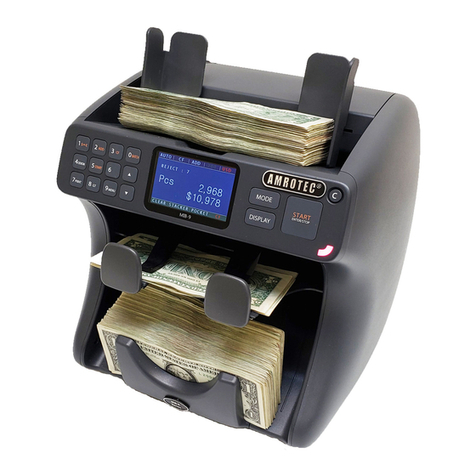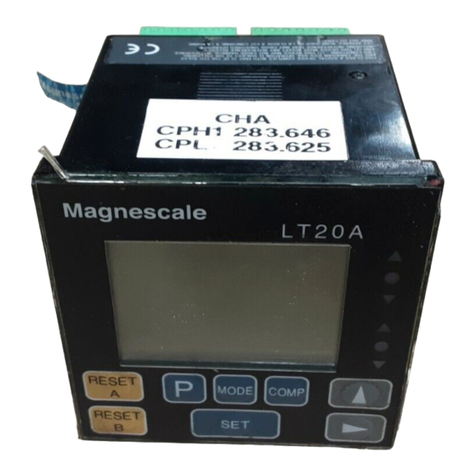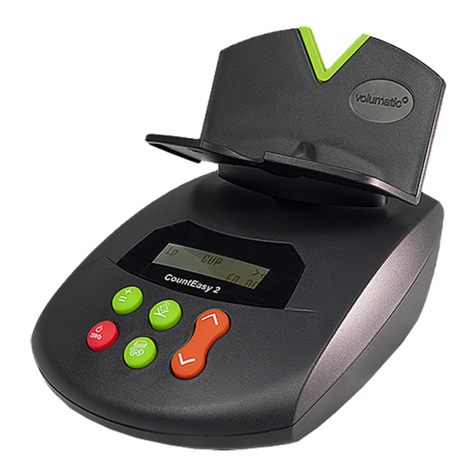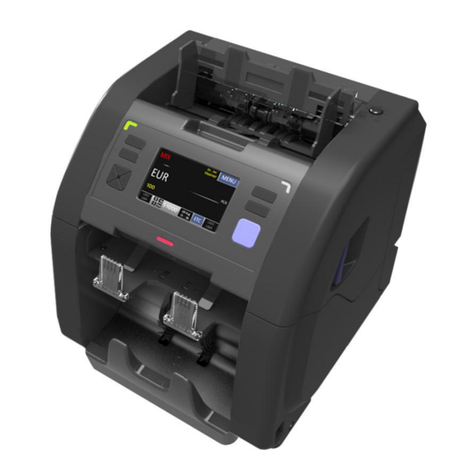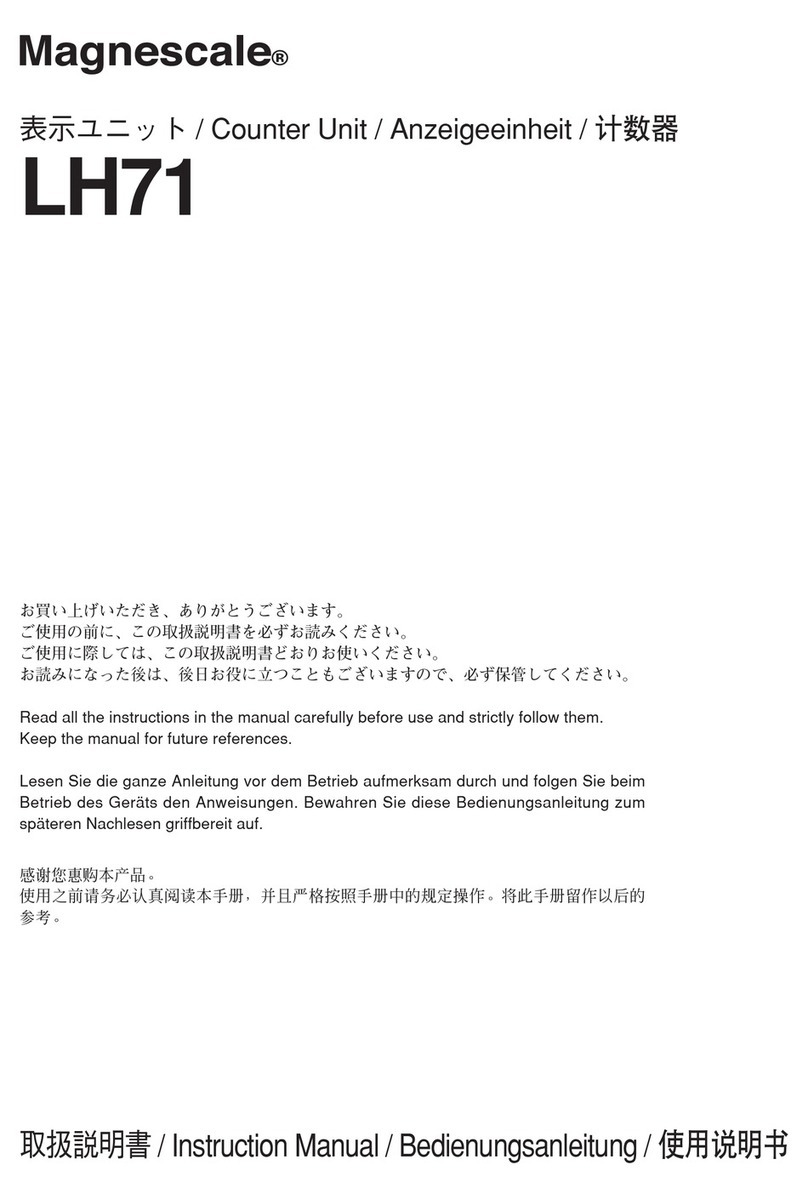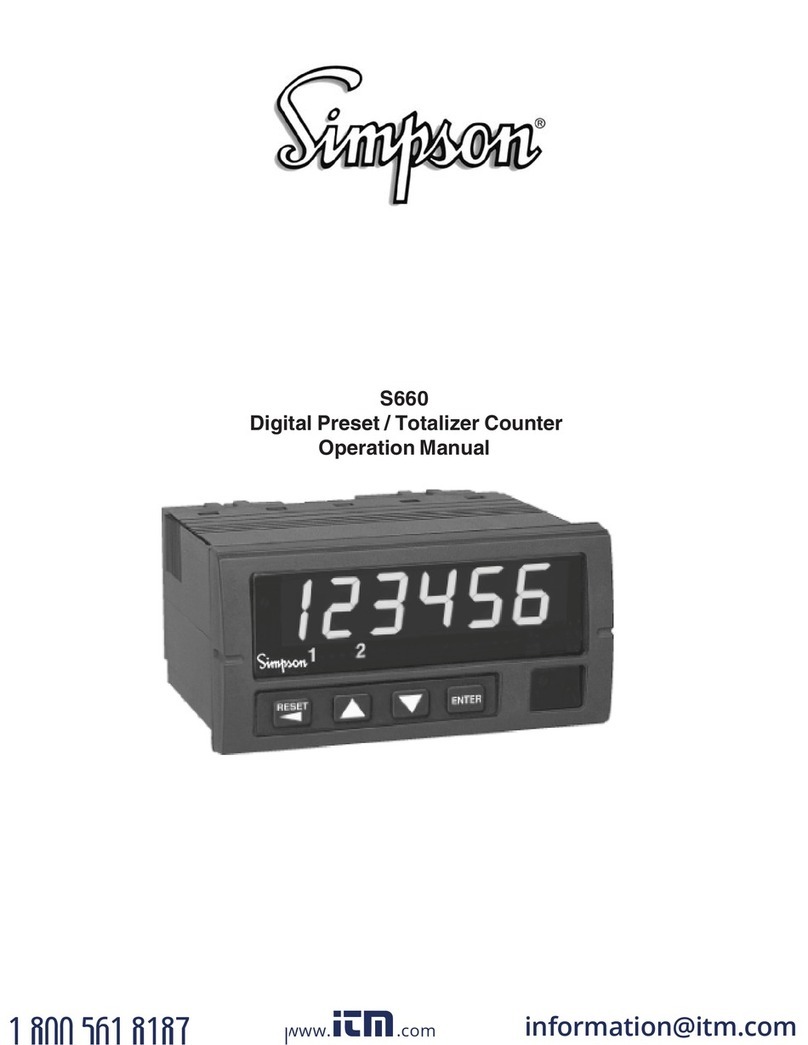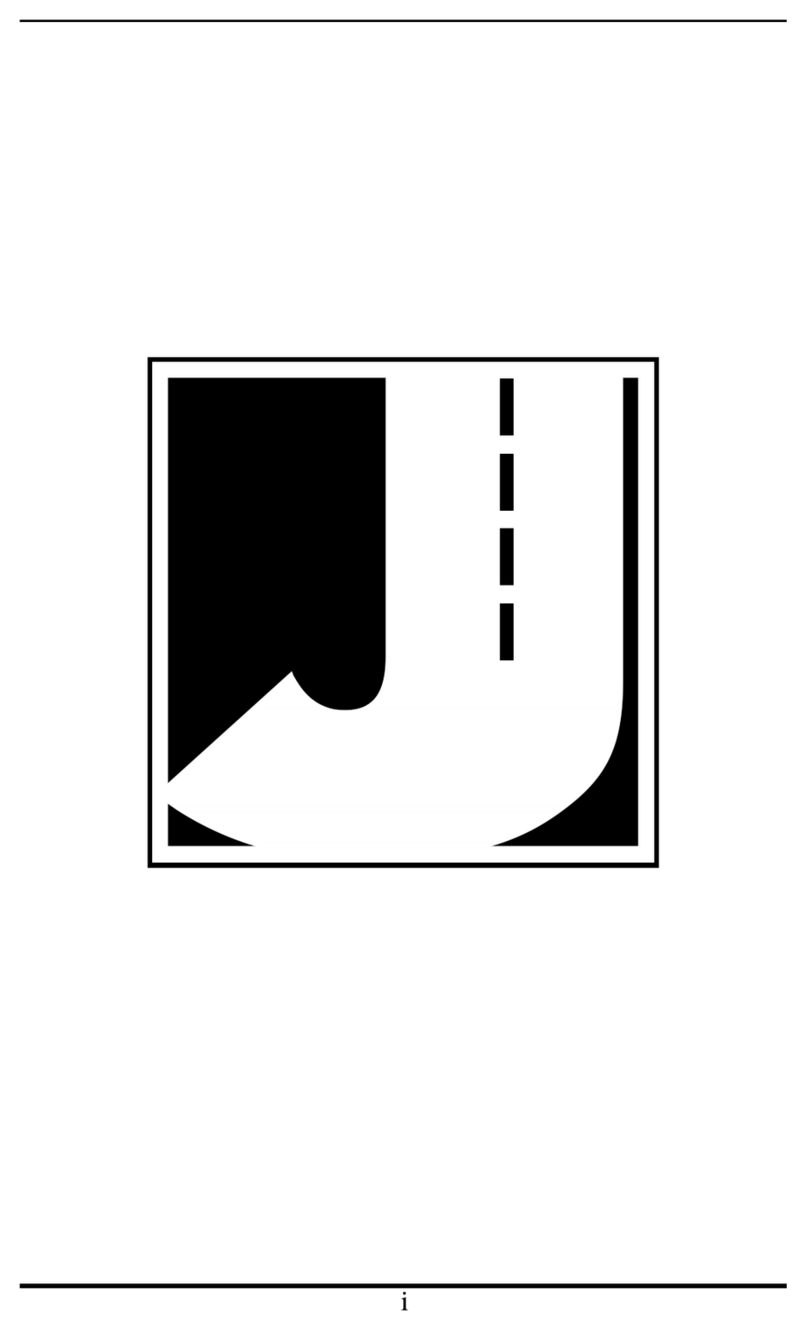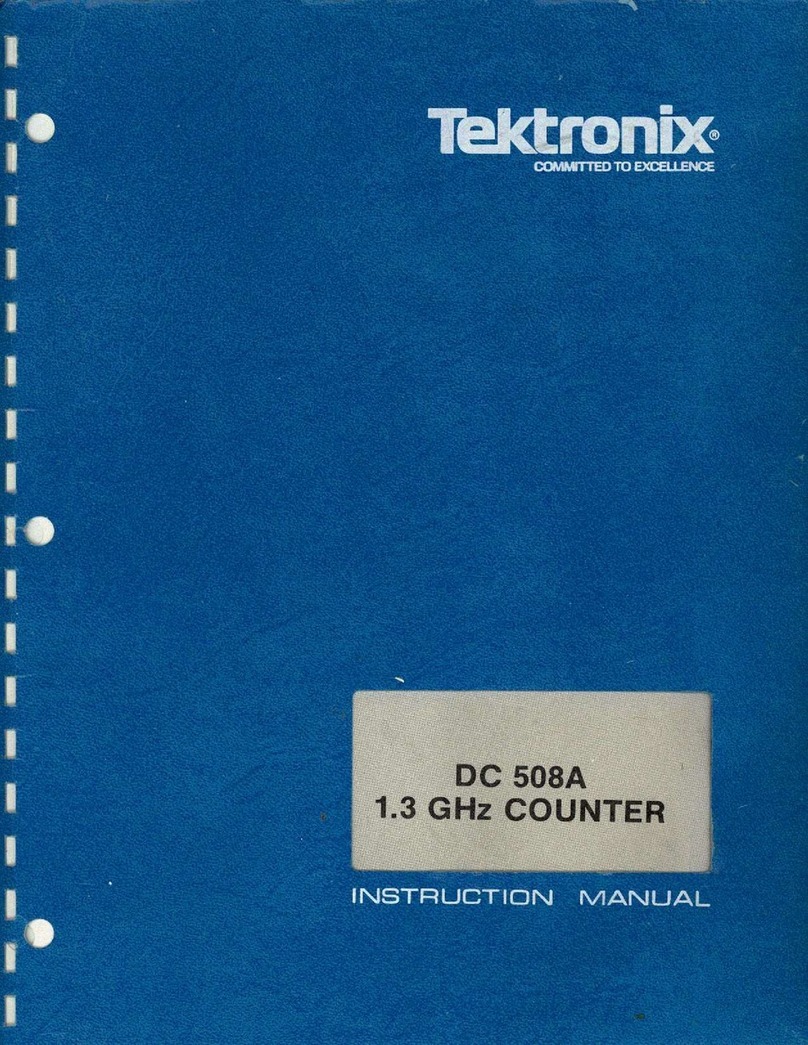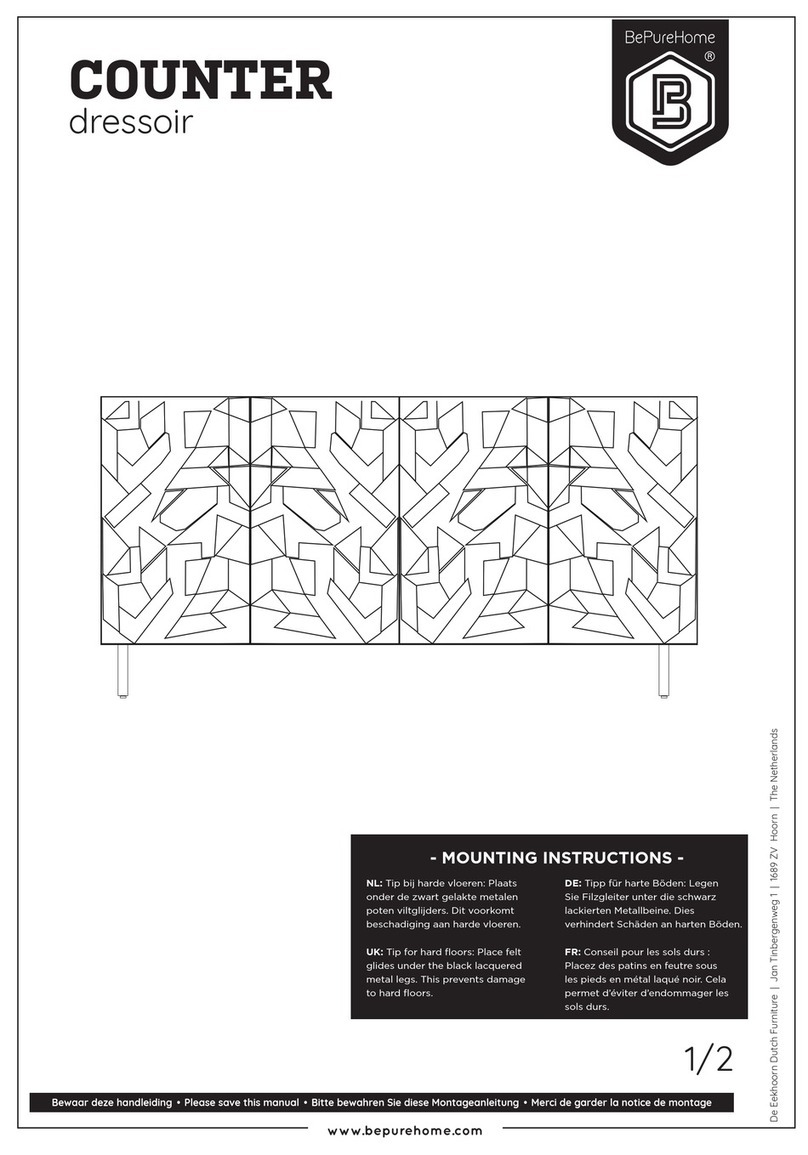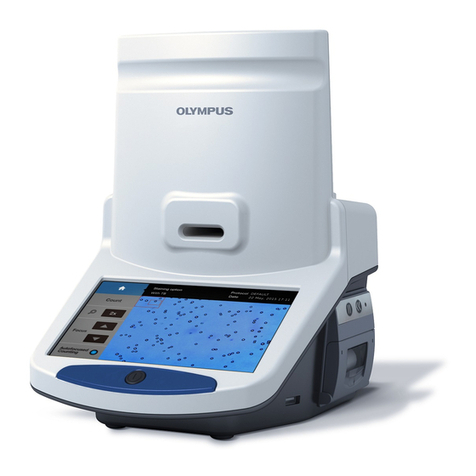advantest corporation TR5821 User manual

ilDVANTEST
ADVANTEST CORPORATION
TR5821/22/23/23H
Universal Counter
Operation Manual
MANUA L N U M B E R FOE-8311233K03
© 1982 ADVANTEST CORPORATION
All ri hts reserved.
First printin June 1, 1982
Printed in Japan

Safety Summary
No. FSDOO
To ensure thorough understanding of all functions and to ensure efficient use of this instrument, please read the
manual carefully before using. Note that Advantest bears absolutely no responsibility for the result of operations
causcd due to incorrect or inappropriate use of this instrument.
If the equipment is used in a manner not specified by Advantest. the protection provided by the equipment may
be impaired.
• arning Labels
arning labels are applied to Advantest products in locations where specific dangers exist. Pay
careful attention to these labels during handling. Do not remove or tear these labels. If you have
any questions regarding warning labels, please ask your nearest Advantest dealer. Our address
and phone number are listed at the end of this manual.
Symbols of those w arning labels are shown below together with their meaning.
DANGER: Indicates an imminently hazardous situation which will result in death or serious
personal injury.
ARNING: Indicates a potentially hazardous situation which will result in death or serious
personal injury.
CAUTION: Indicates a potentially hazardous situation which will result in personal injury or
a damage to property including the product.
• Basic Precautions
Please observe the following precautions to prevent fire. bum. electric shock, and personal inju
ry.
• Use a power cable rated for the voltage in question. Be sure however to use a power cable
conforming to safety standards of your nation w hen using a product overseas.
• hen inserting the plug into die electrical outlet, first turn the power switch OFF and then
insert the plug as far as it will go.
• hen removing the plug from the electrical outlet, first turn the power switch OFF and then
pull it out by gripping the plug. Do not pull on the power cable itself. Make sure your hands
are dry at this time.
• Before turning on the power, be sure to check that the supply voltage matches the voltage
requirements of the instrument.
• Be sure to plug the power cable into an electrical outlet which has a safety ground terminal.
Grounding will be defeated if you use an extension cord which does not include a safety
ground terminal.
• Be sure to use fuses rated for the voltage in question.
• Do not use this instrument with the case open.
Safety-1

Safety Summary
• Do not place objects on top of this product. Also, do not place flower pots or other containers
containing liquid such as chemicals near this product.
• hen the product has ventilation outlets, do not stick or drop metal or easily flammable ob
jects into the ventilation outlets.
• hen using the product on a cart, fix it with belts to avoid its drop.
• hen connecting the product to peripheral equipment, turn the power off.
Symbols indicating items requiring caution which are used in this manual are shown below to
gether with their meaning.
DANGER: indicates an item where there is a danger of serious personal injury (death or seri-
ARNING: Indicates an item relating to personal safety or health.
CAUTION: Indicates an item relating to possible damage to the product or instrument or relat-
Caution Symbols Used ithin this Manual
ous injury).
ing to a restriction on operation.
• Safety Marks on the Product
The following safety marks can be found on Advantest products.
ATTENTION - Refer to manual.
Protective ground (earth) terminal.
: DANGER - High voltage.
CAUTION - Risk of electric shock.
Safety-2

Safety Summary
Precautions when Disposing of this Instrument
hen disposing of harmful substances, be sure dispose of them properly with abiding by the
state-provided law.
Harmful substances: (1) PCB (polycarbon biphenyl)
(2) Mercury
(3) Ni-Cd (nickel cadmium)
(4) Other
Items possessing cyan, organic phosphorous and hexadic chromium
and items which may leak cadmium or arsenic (excluding lead in sol
der).
Example: fluorescent tubes, batteries
Safety-3

Environmental Conditions
This instrument should be only be used in an urea which satisfies the following conditions:
• An area free from corrosive gas
• An area away from direct sunlight
• A dust-free area
• An area free from vibrations
Direct surli''hf
Dust /
Vibration
Figure-1 Environmental Conditions
Instrument Placement
Front Keep at least 10 centimeters of space
between the rear panel and any other
surface
Figure-2 Instrument Placement
This instrument can be used safely under the following conditions:
• Altitude of up to 2000 m
Installation Categories 11
Pollution Degree 2
Safety-4

No. ECA 1
There are six power cable options (refer to following table).
Order power cable options by Model number.
Table of Power Cable Options
Plug configuration Standards Rating, color
and length Model number
(Option number)
US: Japan
Law on Electrical Appliances
125 Vat 7 A
Black
2 m (6 ft)
Straight: AO 1402
Angled: A01412
UL: United States of America
CSA: Canada
125 Vat 7 A
Black
2 m (6 ft)
Straight: AO 1403
(Option 95)
Angled: A01413
CEE: Europe
DEMKO: Denmark
NEMKO: Norway
VDE: Germany
KEMA: The Netherlands
CEBEC: Belgium
OVE: Austria
FIMKO: Finland
SEMKO: Sweden
250 V at 6 A
Gray
2 m (6 ft)
Straight: AO 1404
(Option 96)
Angled: A01414
SEV: Switzerland 250 V at 6 A
Gray
2 m (6 ft)
Straight: A01405
(Option 97)
Angled: A01415
SAA: Australia, New Zealand 250 V at 6 A
Gray
2 m (6 ft)
Straight: AO 1406
(Option 98)
Angled:
---------
BS: United Kingdom 250 V at 6 A
Black
2 m (6 ft)
Straight: A01407
(Option 99)
Angled: A01417
Cable-1*

CONTENTS
SECTION 1 GENERAL INFORMATION
1-1. General......................................................................................1-1
1-2. C aution...................................................................................1-2
SECTION 2 SPECIFICATIONS
2-1. Electrical Per ormance...........................................................2—1
2-2. General Speci ications............................................................2—3
2-3. Options ...................................................................................2-4
24. Accessories Supplied
..............................................................
2-5
SECTION 3 OPERATIONS
3-1. Preparation and Cautions be ore Use
................................
3—1
3-2. Description o Panels
............................................................. 3—5
3-3. Basic Operating Procedure...................................................3-12
3-3*1. Sel -diagnostics Function...........................................3—12
3-3-2. Error Messages............................................................. 3-13
3-3-3. Panel Switch Check.....................................................3—14
3-3-4. Frequency Measurement...........................................3—15
3-3-5. Period Measurement...................................................3-18
3-3-6. Time Interval Measurement
.....................................
3-18
3-3-7. Frequency Ratio Measurement
................................3—19
3-3-8. Totalize........................................................................3—20
3-3-9. Masking
........................
..
.............................................
3—21
3-3-10. High- requency Fuse Replacement
..........................
3—22
SECTION 4 GPIB INTERFACE
4-1. Introduction...........................................................................4—1
4-2. General Outline o the GPIB
.................................................4-1
4-3. Speci ications .........................................................................4—3
44. Data Formats............................................................................4—5
4-5. GPIB Operating Procedures .................................................4-10
4-6. Programming Notes.................................................................4—15
i

SECTION 5 PRINCIPLES OF OPERATIONS
5-1. Introduction
.........................................................................
..
5-1
5-2. Operation o Each B lock....................................................
...
5-1
5-3. Measurement Accuracy
.....................................................
...
5-7
SECTION 6 CALIBRATION
6-1. Introduction
........................................................................
...
6-1
6-2. Calibration for Each Section
...............................
..
6-1
6-3. Equipment Required for Calibration
......................
...
6-2
6-4. In luence o Temperature and Line Voltage Variations
on Stability...........................................................................
...
6-5
SECTION 7 CALCULATION UNIT TR1644 (ACCESSORY)
7-1. Name and Function o Keyboard
.....................................
...
7-1
7-2. Calculation Unit Installation
..............................................
..
7-2
7-3. Operating Examples ............................................................
...7-4
7-4. Notes on U se........................................................................
..
7-5
SECTION 8 OPTIONS
8-1. BCD Output
........................................................................
..
8-1
8-2. D/A Converter.......................................................................
..
8-5
8-3. High-stability Re erence Oscillator (TR5823 only) . . . -6
APPENDIX A TABLE OF SIGNALS
Rackmounting
External View

LIST OF FIGURES
Figure Page
3-1 Power cable plug and adapter......................................................
..
3_2
3-2 Panels description
...........................................................................
..
3_6
3-3 Panels description (TR5823).........................................................
..
3_9
34 Sel -check routine............................................................................
..
3—12
3-5 Frequency measurement (FREQ. A) .........................................
..
3—15
3-6 Frequency measurement (FREQ. B )............................................
..
3—15
3-7 Frequency measurement (FREQ. C)............................................
..
3—16
3-8 Burst measurement.........................................................................
..
3-17
3-9 Period measurement
......................................................................
..
3—18
3-10 Time interval measurement............................................................
..
3—18
3-11 Frequency ratio measurement.......................................................
..
3—19
3-12 Totalize measurement...................................................................
..
3—20
4-1 GPIB outline
..................................................................................
..
4—2
4-2 Signal line termination....................................................................
..
4—3
4-3 GPIB connector pin assignment....................................................
..
4—4
44 Retention o remote setting..........................................................
..
4-11
4-5 GPIB inter ace panel
.....................................................................
..
4-12
5-1 TR5821/5822/5823 block diagram
..........................................
..
5-2
5-2 LSI80-GC and LSI80-SS ...............................................................
..
5-6
5-3 Number o periods with time & requency
.................................
..
5—9
54 Slew rate vs. amplitude & requency
............................................
..
5—10
5-5 Period/time interval averaging
.....................................................
..
5—10
6-1 Calibration using requency standard........................................
.
6-3
6-2 Automatic trigger adjustment.......................................................
.
6—4
6-3 Stability o re erence o scillator
..........................................
.
6—5
7-1 Panel description ...........................................................................7—1
iii

LIST OF TABLE
Table Page
3-1 Setting or AC line v oltage
.....................................................3-3
3-2 Error message types and error locations ...................................
.
3—13
4-1 Inter ace unctions
........................................................................
.
4—4
4-2 Standard bus cables.........................................................................
.
4—10
4-3 Address code tab le.........................................................................
.
4-13
iv

SECTION 1
GENERAL INFORMATION
1-1. General
The TR5821/5822/5823/5823H are compact, inexpensive universal counters
with the capabilities comparable to medium-scale counters. These are the
It became possible to process data with a self-diagnostic function and
various operations (by using TR1644). Since GPIB, BCD (TTL)
output, and analog output (D/A converter) are available, these
equipments can support various system.
TR5821 is a universal counter that can measure frequencies of up to
120 MHz, and can display results in arbitrary form with TR1644
(an extra-cost option).
The TR5822 has the same unctions as the TR5821 plus a built-in GPIB
inter ace, and the unctions o the TR5823 include an ultrahigh- requency
measurement (1.3 GHz) and a burst signal measurement in addition to the
unctions o the TR5821.
The TR5823H is provided with the high-stability oscillator (aging rate:
5 x l0 “ /day) as a standard eature plus the capabilities o the TR5823.
* The TR5823 described in this manual also includes the unctions o the
TR5823H.
1-1

1-2. Caution
1. With POWER ON, sel -check is automatically initiated; any ailure will pro
duce an error message “E01, E07, E10” or about 2s. When POWER is ON
a ter RESET ON, check o panel switches is per ormed (See instruction
manual 3-3-3 or details).
2. When a panel switch is pressed, unction is selected and the instrument is in
the standby state; when released, operation is strarted in the TOT. mode,
totalize operation continues but display is held while the ON/OFF switch is
being pressed (GATE lamp on); when released (GATE lamp o ), totalized
result is displayed.
3. Though selectable by unction selector switch, 4^ position on
TR5821/5822 is not used. Move to any other position.
4. In case o requency measurements (FREQ.B/TR5821, TR5822,
TR5823, TR5823H), when the rapid switching o input requency
happen, the timing o switched requency may cause, the
measurement time to get longer.
5. Damage input levels are shown as ollow.
[Vrms]
500-
INPUT A, INPUT B ATT 10. 1 00
MAXIMUM
AVAILABLE
NPUT VOLTAGE 50V rms
TR5823
INPUT C
TR5821/5822/5823 5V rms
10 100 1k 10k 100k 1 M 10M100M1G
INPUT FREQUENCY [Hz]
1-2

SECTION 2
SPECIFICATIONS
2-1. Electrical Performance
Frequency measurement (FREQ. A)
Range : 10 Hz to 120 MHz
Gate time : 10 ms, 0.1 s, 1 s, or 10 s
Unit display : Hz, kHz, or MHz
Accuracy : ± 1 count ± time base accuracy
Frequency measurement (FREQ. B)
Range : 1 mHz to 50 MHz
Gate time : 10 ms (9 ms to 0.1 s), or 1 period time o input requency
below 10 Hz. Five display digits.
0.1 s (90 ms to 1 s), or 1 period time o input requency
below 1 Hz. Six display digits.
1 s (0.9 s to 10 s), or 1 period time o input requency below
0.1 Hz. Seven display digits.
10 s (9 s to 100 s), or 1 period time o input requency below
10 mHz. Eight display digits.
Unit display : mHz, Hz, kHz, or MHz
Accuracy : ± (Trigger error/10m) ± 1 count ± time"base accuracy
Where 10m is the number o periods. See 5-3-2.
Note:W hen the rapid sw itching o input requency
happen, the tim ing o switched requency m ay
cause, the measurement time to get longer.
Frequency measurement (FREQ. C) (TR5823)
Range : 100 MHz to 1300 MHz (1/20 prescaled)
Gate time : 20 ms, 0.2 s, 2 s, or 20 s
Unit display : Hz, kHz, MHz, or GHz
Accuracy : ± 1 count ± time base accuracy
Period measurement (PERIOD B)
Measurement range: 20 ns to 999.99999s (including when averaged)
Multiplier ( 10n) : 10°, 1 0 \ 102, or 103
Time unit :100 ns
Unit display : ns, /j s , ms, or s
Accuracy : ± (Trigger error/10n) ± 1 count ± time base accuracy
2-1

Time interval measurement (T.l. A - + B)
Range : 200 ns to 999.99999 s
Multiplier (10n) : 10°, 101, 102, or 103
Time unit : 100 ns
Unit display : ns, ijs, ms, or s
Accuracy : ± (Trigger errorlyj\ 0n) ± 1 count ± time base accuracy
Dead time : 50 ns
Frequency ratio measurement (RATIO A/B)
Range : DC to 50 MHz
Multiplier (10n) : 10°, 1 0 \ 102,or 103
Unit display : m, k, or M
Accuracy : ± (Input B trigger error/10n) ± 1 count ± Input A accuracy
Totalize (TOT. A)
Range : DC to 50 MHz, 0 to 99999999
Input Specifications
INPUT A/B
Input sensitivity
Sensitivity switching
Input voltage range
Damaging input level
Input coupling mode
Input impedance
Pulse resolution
Trigger level
Trigger slope
Common/Separate
Masking
Noise rejection
: 25 mVrms, DC to 100 MHz
55 mVrms, 100 MHz to 120 MHz
: x l, xlO, and xlOO
: 25 mVrms to 500 mVrms (at xl)
: DC to 100 kHz: 100 Vrms (xl), 150 Vrms (xlO or
xl GO)
100 kHz to 120 MHz: 5 Vrms (xl), 50 Vrms (xlO or
xlOO)
: DC or AC coupled, or AUTO (AC coupled)
: Approx. 1 M£2//30 pF, COM. A approx. 500 k£2
: 10 ns
: Approximately —1 V to +1 V continuously variable.
In the AUTO mode, the trigger level is automatically
set to the hal -amplitude o the peak value o the
signal to be measured.
: +/— switchable
: COM. handles inputs A and B as common input.
SEP. handles inputs A and B separately.
: Approx. 0.1 ms to 0.1 s. The masking time can be
monitored at CHECK mode.
: 100 kHz low-pass ilter
2-2

INPUT C (TR5 23 only)
Input sensitivity
Sensitivity switching
Input voltage range
Damaging input level
Input coupling mode
Input impedance
Burst mode
Noise rejection
20 mVrms, 100 MHz to 1300 MHz
xl and xlO
20 mVrms to 500 mVrms (at xl)
5 Vrms (with protection use)
AC coupled
50 a
BURST switch operation enables burst signal mea
surement.
Automatically suppressed by ANS (Automatic Noise
Suppressor) (ON-OFF switching)
Time Base
Internal re erence requency : 10 MHz
Frequency stability : Aging rate: ±5 x 10~7/month
Temperature stability: ±5 x 10‘6(0°C to ±40°C)
Line voltage: ±2.5 x 10“7(100 V ± 10%)
Internal re erence output: Frequency: 10 MHz
Output voltage: 1 Vp.p to 2 Vp.p
Output impedance: approx. 500 £2
External re erence input: Frequency: 10 MHz
Input voltage: 1 Vp.p to 10 Vp.p
Input impedance: approx. 500 tl
2-2. General Specifications
Display : decimal digits
Green, 7-segment LED, display storage method
Sample rate : 50 ms or hold
Sel -check : Counting operation check by internal re erence signals
Operating environment : Temperature: 0°C to +40°C
Relative humidity: 85% or less
: —20°C to +70°C
90 -1 1 0 V, 108 -1 3 2 V, 198 - 242 V, 216 - 250 V
50 Hz to 400 Hz,
40 VA or less (TR5821/22/23)
(W)240 x (H) x (D)280 mm approx.
3.5 kg or less (TR5821)
4 kg or less (TR5822/5823)
Storage temperature
Power requirements
Power consumption
Dimensions
Mass
2-3

GPIB data output & remote control
Standard : IEEE STD. 488—1978
Inter ace unctions : Source and acceptor handshake
Talker/listener
Service request
Device clear
Code used : ASCII code
Remote-programmable unctions : Function
Gate time/Multiplier
Hold
BCD data outpui
Data : Digit parallel
Output digits: Mantissa 7 digits, exponent 1 digit
Output level : TTL, positive logic
D/A converter (requires TR1644)
Output voltage : 0.999 V ull-scale
Conversion digits : Any 3 consecutive'digits
Output terminal : Binding post
Output impedance : Approx. 1 kH
DA output is not done at the function of TOT.
High-stability reference oscillator
Stability : Aging rate: 5 x 1 O'8/day
Temperature characteristics: ±1 x 10'7, 0°C to +40° C
The internal re erence output and external re erence input specitications
are the same as the standard time base.
2-3. Options
TR1644 Calculation Unit
Math mode : ± (addition, subtraction), x (multiplication), -r (division),
DAC (D/A converter mode), comparison, delta, Max., Min.,
%, scaling, arithmetic operation between set values by using
= key (±, x, -r)
Digit : Setting: Mantissa digits, exponent 1 digit
Display: digits
2 -4

Option combinations
Only one kind o inter ace can be attached to all products except or TR5821.
(Options to be installed in ADVANTEST side)
Name o
type Product code Built-in inter ace
TR5822 5822-GP
5822-BCD
5822-DA
Equipped with GPIB
Equipped with BCD output
Equipped with D/A converter (TR1644 must be
prepared separately)
TR5823
5823
5823-GP
5823-BCD
5823-DA
Equipped with GPIB
Equipped with BCD output
Equipped with D/A converter (TR1644 must be
prepared separately)
TR5823H
5823H
5823H-GP
5823H-BCD
5823H-DA
Equipped with GPIB
Equipped with BCD output
Equipped with D/A converter (TR1644 must be
prepared separately)
2-4. Accessories Supplied
(1) Power cable *1
.....................................
I
(2) Input cable (A01036-1500) I
(3) Input cable (MI-03) .................................................................................... I
(4) Slow-blow use (T04A) (AC100/120 Vac)*2................................................ 2
(5) High- requency use (TR5823/5823H only).......................................... 2
(6) Instruction Manual ...................................................................................... I
(7) Carrying Case (TR16202) (To be purchased separately)
.......................
I
*1: ADVANTEST provides the power cables for each country.
*2: T0.2A for 220,240 V ac
2-5

SECTION 3
OPERATIONS
3-1. Preparation and Cautions Before Use
3-1-1. Inspection
A ter receiving this unit, check it or any damages that may have occurred
during transit, especially or damage o panel switches and terminals. Should
any damage be ound or i the unit does not operate as speci ied, contact
your nearest ADVANTEST representative.
3-1-2. Storage
For long-term storage, place the unit in a vinyl cover or cardboard box and
store it at low-humidity out o direct sunlight.
3-1-3. Transportation
To transport this unit, use the original packing. I the packing has been
discarded, pack it as ollows:
(1) Wrap the unit in a vinyl.
(2) Place the unit in a cardboard box having walls at least 5 mm thick. Place
packing o 40 mm or thicker under, all around, and over the unit.
(3) A ter covering the unit with packing, it the accessories in the box and
place packing over them. Close the cardboard box, then secure the box
with packing tape.
3-1-4. General Cautions Before Use
(1) Power supply
The power voltage has been set at actory; it is indicated above the
power cable on the rear panel. Use a power supply o 100 V ac±10%,
or 120/220 V ac ±10%, 240 V ac +4%, —10% at a requency o
50 Hz to 400 Hz. Check that the PO ER switch is set to STBY be ore
connecting the power cable to the power source.
(2) Power cable
The power cable has a 3-prong plug; the round prong in the center is or
ground. When connecting the plug to the power receptacle via an adap
ter, connect the wire leading out o the adapter to ground.
(See Figure 3-1.)
3-1

Adapter
Fig. 3-1 Power cable plug and adapter

A fuse is installed into the outlet on the rear panel. The check
or replacement of the fuse should be done as follows. (Applicable
fuses are shown in Table 3-1.)
To change an AC line voltage, pull the voltage selector out with
a pair of long-nose pliers and so on, and then set the AC line
voltage. You can see the selected AC line voltage on the face of
the voltage selector.
R eplacem ent of a fuse
CD Take a fuse out of the
outlet on the rear panel.
Pull out with a flatblade
screwdriver and so on.
Check or replace a fuse
and then put it back into
the outlet.
y Applicable fuse
T a b le 3 -1 Setting or AC line voltage
AC line
voltage Display of set voltages Applicable fuse
100V 1 100 1 TO. 4A/250V
120V 1 120 1
220 V |220 | T0.2A/250V
240V 1 240 |
This manual suits for next models
3
Table of contents


